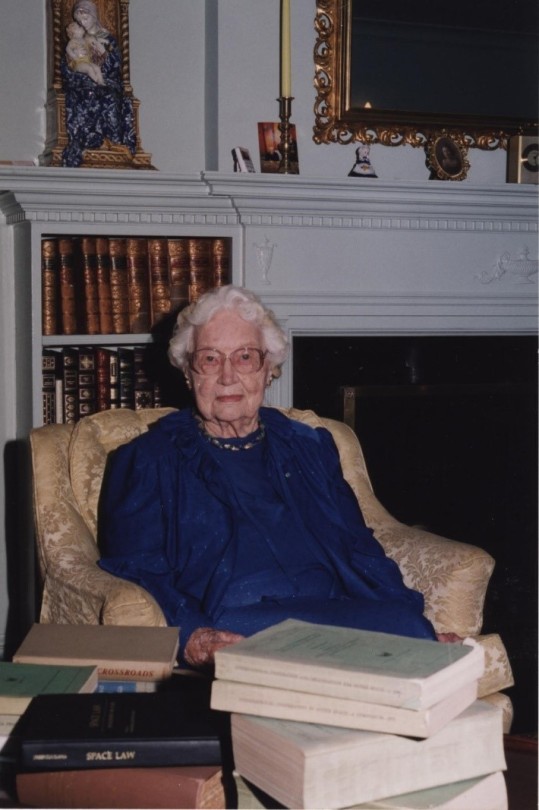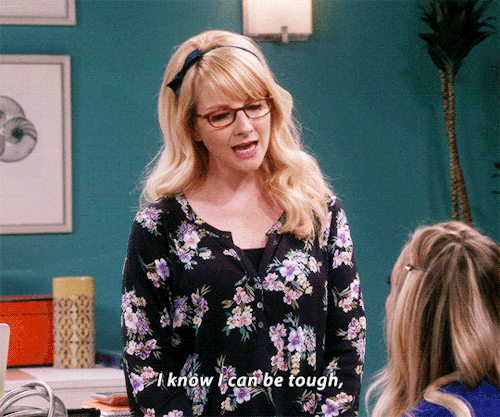4 Little Known Women Who Made Huge Contributions To NASA

LaRue Burbank, mathematician and computer, is just one of the many women who were instrumental to NASA missions.
4 Little Known Women Who Made Huge Contributions to NASA
Women have always played a significant role at NASA and its predecessor NACA, although for much of the agency’s history, they received neither the praise nor recognition that their contributions deserved. To celebrate Women’s History Month – and properly highlight some of the little-known women-led accomplishments of NASA’s early history – our archivists gathered the stories of four women whose work was critical to NASA’s success and paved the way for future generations.
LaRue Burbank: One of the Women Who Helped Land a Man on the Moon
LaRue Burbank was a trailblazing mathematician at NASA. Hired in 1954 at Langley Memorial Aeronautical Laboratory (now NASA’s Langley Research Center), she, like many other young women at NACA, the predecessor to NASA, had a bachelor's degree in mathematics. But unlike most, she also had a physics degree. For the next four years, she worked as a "human computer," conducting complex data analyses for engineers using calculators, slide rules, and other instruments. After NASA's founding, she continued this vital work for Project Mercury.
In 1962, she transferred to the newly established Manned Spacecraft Center (now NASA’s Johnson Space Center) in Houston, becoming one of the few female professionals and managers there. Her expertise in electronics engineering led her to develop critical display systems used by flight controllers in Mission Control to monitor spacecraft during missions. Her work on the Apollo missions was vital to achieving President Kennedy's goal of landing a man on the Moon.
Eilene Galloway: How NASA became… NASA

Eilene Galloway wasn't a NASA employee, but she played a huge role in its very creation. In 1957, after the Soviet Union launched Sputnik, Senator Richard Russell Jr. called on Galloway, an expert on the Atomic Energy Act, to write a report on the U.S. response to the space race. Initially, legislators aimed to essentially re-write the Atomic Energy Act to handle the U.S. space goals. However, Galloway argued that the existing military framework wouldn't suffice – a new agency was needed to oversee both military and civilian aspects of space exploration. This included not just defense, but also meteorology, communications, and international cooperation.
Her work on the National Aeronautics and Space Act ensured NASA had the power to accomplish all these goals, without limitations from the Department of Defense or restrictions on international agreements. Galloway is even to thank for the name "National Aeronautics and Space Administration", as initially NASA was to be called “National Aeronautics and Space Agency” which was deemed to not carry enough weight and status for the wide-ranging role that NASA was to fill.
Barbara Scott: The “Star Trek Nerd” Who Led Our Understanding of the Stars

A self-described "Star Trek nerd," Barbara Scott's passion for space wasn't steered toward engineering by her guidance counselor. But that didn't stop her! Fueled by her love of math and computer science, she landed at Goddard Spaceflight Center in 1977. One of the first women working on flight software, Barbara's coding skills became instrumental on missions like the International Ultraviolet Explorer (IUE) and the Thermal Canister Experiment on the Space Shuttle's STS-3. For the final decade of her impressive career, Scott managed the flight software for the iconic Hubble Space Telescope, a testament to her dedication to space exploration.
Dr. Claire Parkinson: An Early Pioneer in Climate Science Whose Work is Still Saving Lives

Dr. Claire Parkinson's love of math blossomed into a passion for climate science. Inspired by the Moon landing, and the fight for civil rights, she pursued a graduate degree in climatology. In 1978, her talents landed her at Goddard, where she continued her research on sea ice modeling. But Parkinson's impact goes beyond theory. She began analyzing satellite data, leading to a groundbreaking discovery: a decline in Arctic sea ice coverage between 1973 and 1987. This critical finding caught the attention of Senator Al Gore, highlighting the urgency of climate change.
Parkinson's leadership extended beyond research. As Project Scientist for the Aqua satellite, she championed making its data freely available. This real-time information has benefitted countless projects, from wildfire management to weather forecasting, even aiding in monitoring the COVID-19 pandemic. Parkinson's dedication to understanding sea ice patterns and the impact of climate change continues to be a valuable resource for our planet.
Make sure to follow us on Tumblr for your regular dose of space!
More Posts from Selenophhile and Others





Some photos I took of the Columbus Module at the National Space Centre
24/3/25 and 25/3/25
I'm actually proud of myself- these past two days I've been fairly productive. I started priming a day prior and its been really effective so far! The info stuck and i found myself able to answer most of the questions the teachers asked during classes
I haven't been insanely productive but to me it's really smth considering the fact that I would go days (and sometimes weeks) without studying back in 11th grade. Hoping this continues :))


THE BIG BANG THEORY 12.13 - "The Confirmation Polarization"
Top Study Tips from NASA

Study smarter this school year! We asked scientists, engineers, astronauts, and experts from across NASA about their favorite study tips – and they delivered. Here are a few of our favorites:

Study with friends
Find friends that are like-minded and work together to understand the material better. Trading ideas with a friend on how to tackle a problem can help you both strengthen your understanding.

Create a study environment
Find a quiet space or put on headphones so you can focus. You might not be able to get to the International Space Station yet, but a library, a study room, or a spot outside can be a good place to study. If it’s noisy around you, try using headphones to block out distractions.

Take breaks
Don’t burn yourself out! Take a break, go for a walk, get some water, and come back to it.
Looking for more study tips? Check out this video for all ten tips to start your school year off on the right foot!
Make sure to follow us on Tumblr for your regular dose of space!
Here's the link to the video
👏 SAY 👏 IT 👏 LOUDER 👏
7 mins 😞**
heyyyy gurllll... are you a rubiks cube.. cuz i bet i could finish you in 40 minutes if i got lucky enough


In the face of overwhelming odds, I’m left with only one option: I’m gonna have to science the shit out of this.

One of my favourite quotes from my inspiration - Madame Curie, to welcome the weekend <3
Keep going STEMmes (still figuring out that spelling :\ )
Please do drop any suggestions if you have any, for more such quote art <33




The Big Bang Theory - Season 4 Bloopers
-
 dr-lapdance reblogged this · 3 weeks ago
dr-lapdance reblogged this · 3 weeks ago -
 marooned-in-reality liked this · 1 month ago
marooned-in-reality liked this · 1 month ago -
 sntientcomputer liked this · 1 month ago
sntientcomputer liked this · 1 month ago -
 dirtypigeon19 liked this · 1 month ago
dirtypigeon19 liked this · 1 month ago -
 helianthusaster reblogged this · 1 month ago
helianthusaster reblogged this · 1 month ago -
 helianthusaster liked this · 1 month ago
helianthusaster liked this · 1 month ago -
 nat-tea-n-coffee reblogged this · 1 month ago
nat-tea-n-coffee reblogged this · 1 month ago -
 nat-tea-n-coffee liked this · 1 month ago
nat-tea-n-coffee liked this · 1 month ago -
 solarpunkbaby reblogged this · 1 month ago
solarpunkbaby reblogged this · 1 month ago -
 bi-bee159 liked this · 1 month ago
bi-bee159 liked this · 1 month ago -
 digital0ak liked this · 1 month ago
digital0ak liked this · 1 month ago -
 rosethevoid liked this · 1 month ago
rosethevoid liked this · 1 month ago -
 tristinaautumn liked this · 1 month ago
tristinaautumn liked this · 1 month ago -
 andy202405 liked this · 2 months ago
andy202405 liked this · 2 months ago -
 optimisticc-heartss liked this · 2 months ago
optimisticc-heartss liked this · 2 months ago -
 butter-is-bored liked this · 2 months ago
butter-is-bored liked this · 2 months ago -
 sizzlingcandyjellyfishhhhhh liked this · 2 months ago
sizzlingcandyjellyfishhhhhh liked this · 2 months ago -
 radio-silence-fan reblogged this · 2 months ago
radio-silence-fan reblogged this · 2 months ago -
 radio-silence-fan liked this · 2 months ago
radio-silence-fan liked this · 2 months ago -
 starpilled liked this · 2 months ago
starpilled liked this · 2 months ago -
 sowearecleariamhere liked this · 2 months ago
sowearecleariamhere liked this · 2 months ago -
 absolutesciencefiction reblogged this · 2 months ago
absolutesciencefiction reblogged this · 2 months ago -
 buf309 liked this · 2 months ago
buf309 liked this · 2 months ago -
 mariaisabel992 liked this · 2 months ago
mariaisabel992 liked this · 2 months ago -
 androidsghost liked this · 2 months ago
androidsghost liked this · 2 months ago -
 solarpunkbaby liked this · 2 months ago
solarpunkbaby liked this · 2 months ago -
 empyreanangel reblogged this · 2 months ago
empyreanangel reblogged this · 2 months ago -
 kimberlyn64 liked this · 2 months ago
kimberlyn64 liked this · 2 months ago -
 cabbagesoupenjoyer liked this · 2 months ago
cabbagesoupenjoyer liked this · 2 months ago -
 il0veu liked this · 2 months ago
il0veu liked this · 2 months ago -
 thegirlplug liked this · 2 months ago
thegirlplug liked this · 2 months ago -
 astridvo liked this · 2 months ago
astridvo liked this · 2 months ago -
 carpediemduude liked this · 2 months ago
carpediemduude liked this · 2 months ago -
 imaginesbymonika liked this · 3 months ago
imaginesbymonika liked this · 3 months ago -
 call-me-ryro liked this · 3 months ago
call-me-ryro liked this · 3 months ago -
 dimensionwarp liked this · 3 months ago
dimensionwarp liked this · 3 months ago -
 celestialveilinn reblogged this · 3 months ago
celestialveilinn reblogged this · 3 months ago -
 datafag1 liked this · 3 months ago
datafag1 liked this · 3 months ago -
 emmielemie reblogged this · 3 months ago
emmielemie reblogged this · 3 months ago -
 destinopino liked this · 3 months ago
destinopino liked this · 3 months ago -
 wheresmyeddiemunson liked this · 3 months ago
wheresmyeddiemunson liked this · 3 months ago -
 halaagmod liked this · 4 months ago
halaagmod liked this · 4 months ago -
 bookbansheee liked this · 4 months ago
bookbansheee liked this · 4 months ago -
 marecrisis liked this · 4 months ago
marecrisis liked this · 4 months ago -
 calliope-ev liked this · 4 months ago
calliope-ev liked this · 4 months ago
